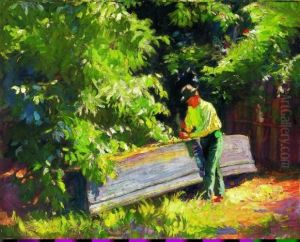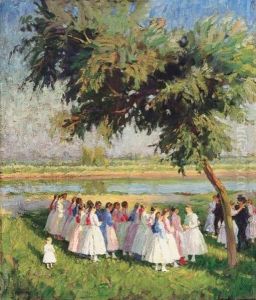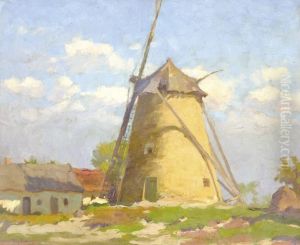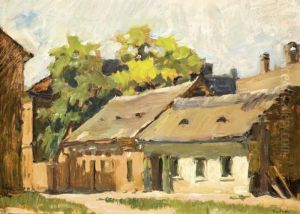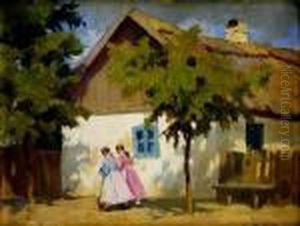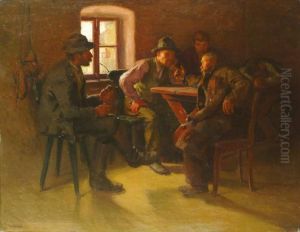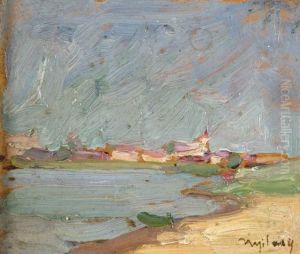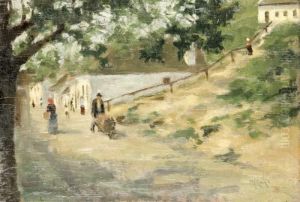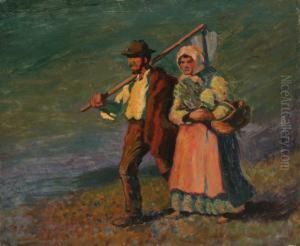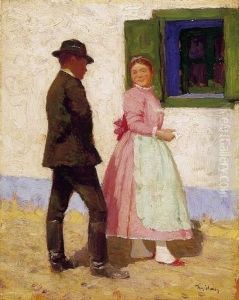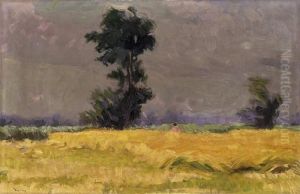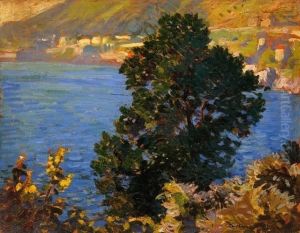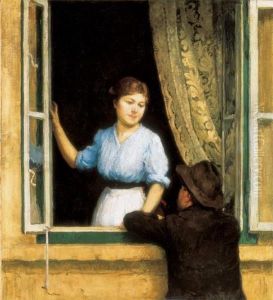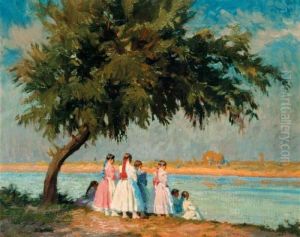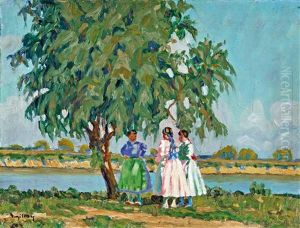sandor Nyilasy Paintings
Sándor Nyilasy, born in 1911 in Hungary, was a notable painter whose work was largely influenced by the social and political circumstances of his time. His early life was marked by the aftermath of World War I and the turbulent interwar period in Hungary. These experiences shaped his artistic vision, which often reflected themes of social realism and the human condition.
Nyilasy's education in the arts began in Hungary, where he attended various art schools and developed his skills in painting. Throughout the 1930s and 1940s, he honed his craft and began to establish a name for himself in Hungarian art circles. His style initially showed the influence of classical and academic traditions, but as his career progressed, he began to incorporate more modernist elements, experimenting with form and color.
During World War II, Hungary's situation impacted Nyilasy's work even further. The war and subsequent occupation by Soviet forces led to a shift in the country's cultural landscape. In the post-war period, Nyilasy, like many artists of the time, was confronted with the rise of socialist realism as the state-sponsored art form. This political art movement, which originated in the Soviet Union, aimed to glorify the socialist cause and the proletariat.
Nyilasy's work from this period often depicts scenes of everyday life, workers, and the peasantry, embodying the ideals of socialist realism. Despite the constraints of the political environment, he managed to maintain a level of individual expression in his art, which kept his work from becoming entirely propagandistic.
As the political climate in Hungary shifted once again during the 1956 Hungarian Revolution, Nyilasy's art continued to evolve. The revolution was a nationwide revolt against the Marxist-Leninist government of the Hungarian People's Republic and its Soviet-imposed policies. Although the uprising was brutally suppressed, it led to a slight loosening of artistic censorship.
In the later years of his career, Nyilasy's work became more reflective and introspective. His paintings from this period display a maturity in style and a deepened understanding of his subjects. Nyilasy remained active in the Hungarian art scene until his death in 1976. His legacy is one of perseverance and adaptation to the ever-changing artistic and political landscapes of his country.
Today, Sándor Nyilasy is remembered as an important figure in Hungarian art history. His paintings can be seen in various museums and galleries, serving as a testament to his talent and the complex times he lived through.

